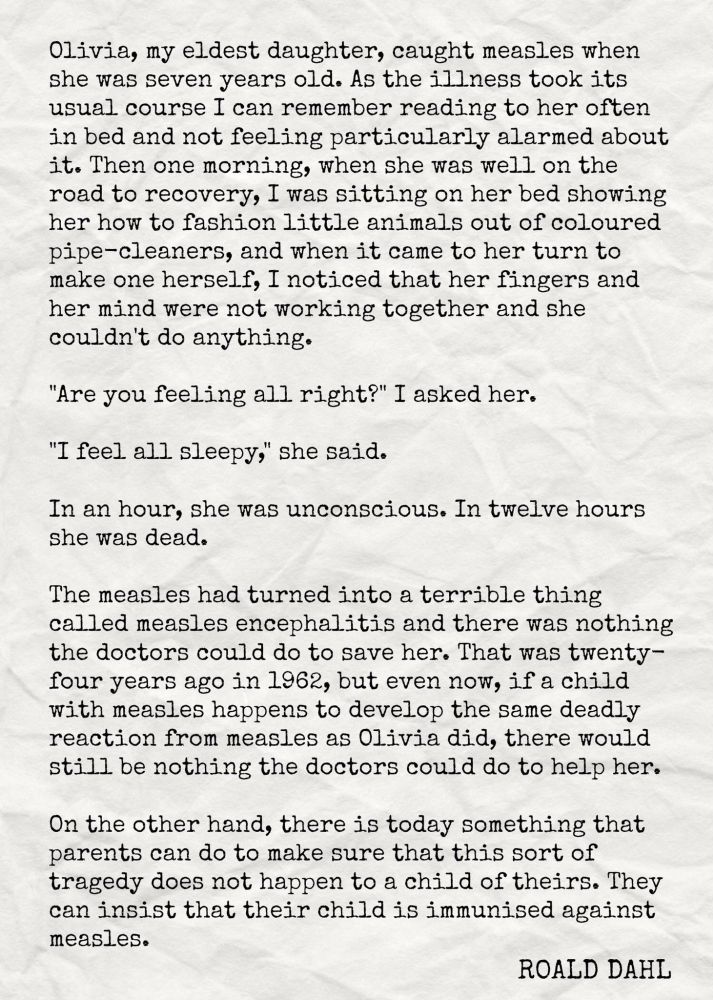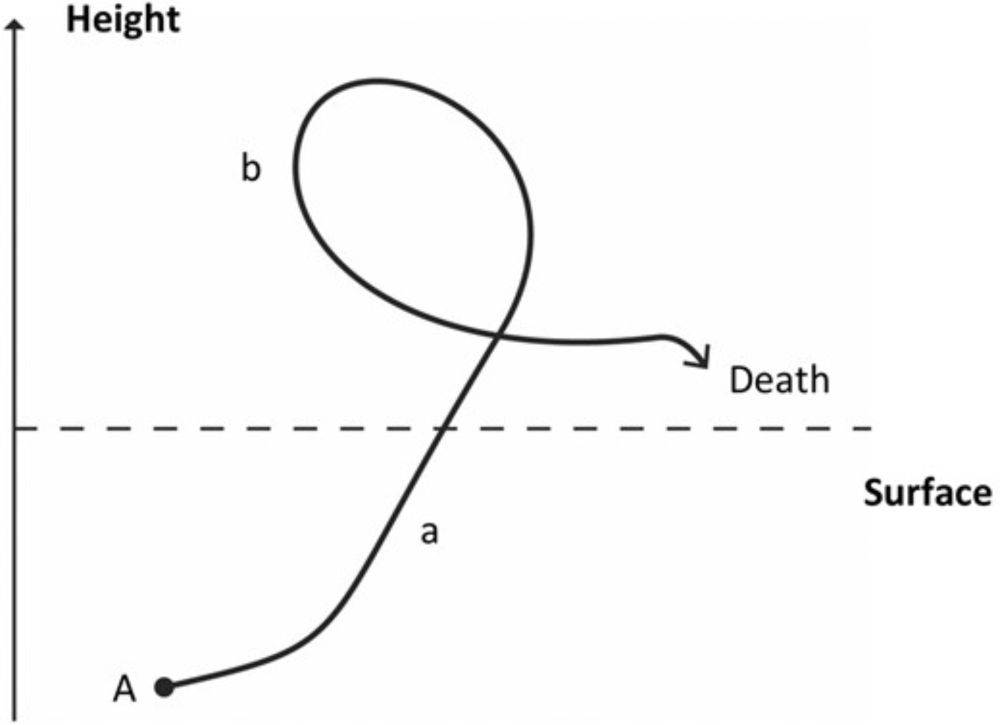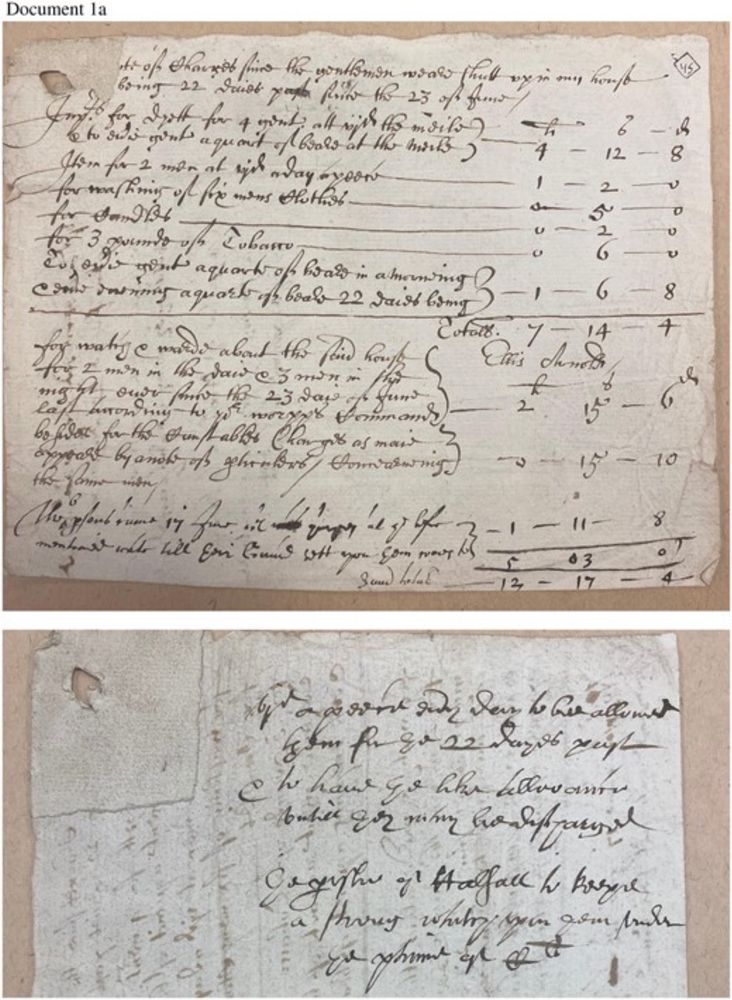
Scientists aiming to bring back woolly mammoth create woolly mice
04.03.2025 13:31 — 👍 231 🔁 51 💬 51 📌 93@gsodikoff.bsky.social
Medical and environmental anthropologist: zoonosis, extinction, multispecies ethnography, kinship, conservation, Madagascar. Rutgers University-Newark

Scientists aiming to bring back woolly mammoth create woolly mice
04.03.2025 13:31 — 👍 231 🔁 51 💬 51 📌 93
Excerpt from a public letter Roald Dahl wrote encouraging people to vaccinate their children. Olivia, my eldest daughter, caught measles when she was seven years old. As the illness took its usual course I can remember reading to her often in bed and not feeling particularly alarmed about it. Then one morning, when she was well on the road to recovery, I was sitting on her bed showing her how to fashion little animals out of coloured pipe-cleaners, and when it came to her turn to make one herself, I noticed that her fingers and her mind were not working together and she couldn’t do anything. “Are you feeling all right?” I asked her. “I feel all sleepy,” she said. In an hour, she was unconscious. In twelve hours she was dead. The measles had turned into a terrible thing called measles encephalitis and there was nothing the doctors could do to save her. That was twenty-four years ago in 1962, but even now, if a child with measles happens to develop the same deadly reaction from measles as Olivia did, there would still be nothing the doctors could do to help her. On the other hand, there is today something that parents can do to make sure that this sort of tragedy does not happen to a child of theirs. They can insist that their child is immunized against measles. I was unable to do that for Olivia in 1962 because in those days a reliable measles vaccine had not been discovered. Today a good and safe vaccine is available to every family and all you have to do is to ask your doctor to administer it.
The measles outbreak in Texas is reminding me of the public letter Roald Dahl wrote about losing his daughter to measles in 1962, just before the vaccine was publicly available.
15.02.2025 17:48 — 👍 26863 🔁 11827 💬 409 📌 549Special issue by the Global War Against the Rat project, on the subject of "Invasive Species, Global Health, and Colonial Legacies" is now available adv. access @ JHMAS
See this great thread by @julesskotnesbrown.bsky.social on the articles contained in the special issue
@gsodikoff01.bsky.social this is a fake account
16.01.2025 14:25 — 👍 0 🔁 0 💬 0 📌 0gsodikoff01 is a fake account impersonating me that just followed real me. So frustrating that bots are already infiltrating this site.
15.01.2025 04:54 — 👍 1 🔁 0 💬 0 📌 0
We always think of rats spreading plague across seas, but what about transmission across land? Christos Lynteris examines the colonial history of this question in: A Rat’s Progress: Plague and the "Migratory Rat" in British India, 1896-1899 #histmed OA academic.oup.com/jhmas/advanc...
04.01.2025 12:04 — 👍 7 🔁 1 💬 0 📌 0
My very first article has been published in the American Historical Review! ✨
In it I've transcribed a handful of petitions that help us to understand how people began to piece their lives back together following an outbreak of plague 👇
academic.oup.com/ahr/article-...